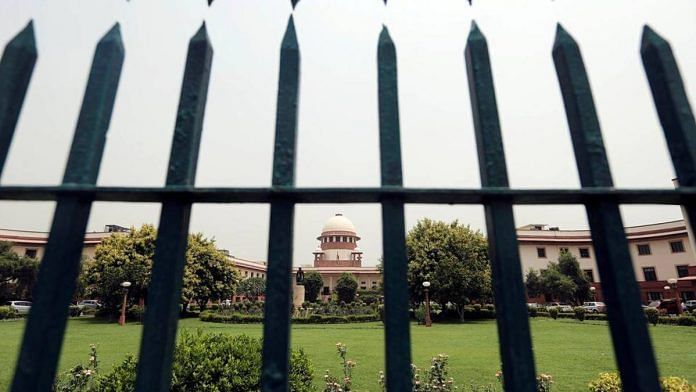New Delhi: The Supreme Court Thursday asked the Centre to furnish details on how many illegal migrants had entered Assam and the north-eastern states after 25 March, 1971.
A constitution bench led by Chief Justice D.Y. Chandrachud also sought to know from the government what steps had been taken on the administrative side to curb illegal immigration into the north-eastern states, particularly Assam.
The bench further said it would like to get details of the extent of border-fencing and the estimated timeline to finish it.
The bench issued the direction when Solicitor General Tushar Mehta was making his submissions defending incorporation of Section 6A in the Citizenship Act, 1955. The provision was introduced to give effect to the Assam Accord of 1985.
According to Section 6A, persons of Indian origin who migrated to Assam from present-day Bangladesh between 1 January, 1966, and 25 March, 1971 (date of commencement of the Bangladesh liberation war) are eligible to obtain Indian citizenship. Those who migrated to Assam after 25 March, 1971, are ineligible and can be deported as foreigners.
Foreigners’ Tribunals have been established to determine whether persons are illegal migrants or Indian citizens.
Signed by the then Rajiv Gandhi government with the leaders of the Assam Movement on 15 August, 1985, the Assam Accord seeks to preserve and protect Assamese culture, heritage, linguistic and social identity.
Also Read: Why EC’s Assam delimitation draft has Opposition crying foul — ‘hasty, favours BJP’
Arguments
The five-judges’ bench is hearing the challenge to Section 6A made by Assam indigenous groups to the extent it permits migrants who entered between the reference dates to apply for Indian citizenship.
The bench has already clarified that it would restrict itself to examining the validity of Section 6A and not the National Register of Citizen (NRC).
According to the petitioners, the disputed section operates in a “blanket manner” and incentivises illegal migrants to stay in Assam in violation of the law. They say the move singled out Assam, even though the state and other immediate neighbouring border states form a homogeneous single class.
During the hearing Thursday, the court observed that regardless of its position on Section 6A, it would deal with the issue of illegal migration “seriously”.
Asking the Centre and Assam government to file a common affidavit on the questions it has raised, the bench asked the state to share data on specific aspects with the central government.
The details which the bench has sought from the government include the number of persons to whom citizenship has been granted under Section 6A with reference to the time period of persons who came into Assam between 1 January, 1966, and 25 March, 1971.
It has also sought information on how many persons had been detected to be foreigners under the Foreigners Tribunals Order of 1964.
The other information which the Centre has been asked to provide to court relates to the total number of foreigner tribunals that have been set up till now, total number of cases decided by them, number of cases pending as of date, the average time taken for disposal of cases and number of pending cases in which decisions of the foreigners tribunals have been challenged before the Guahati High Court.
The Centre has defended inclusion of Section 6A and claimed that it stopped being operational after the year 2013.
On Wednesday, the five-judges’ bench observed that the Centre must have the freedom to make “adjustments” in the larger interest of the nation, particularly when dealing with insurgency and violence.
These adjustments may appear as concessions at a later point of time, but can be compromises that governments are required to make in the interest of peace in strife-ridden states, the bench said.
(Edited by Nida Fatima Siddiqui)
Also Read: ‘Golden era of modern Assam’ or ‘bid to impress BJP brass’? Behind Himanta’s local culture push



